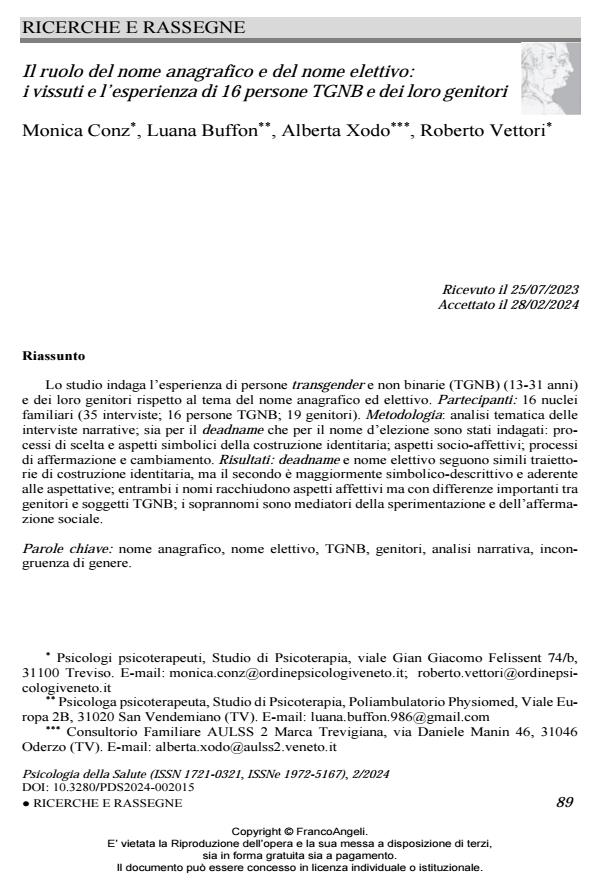The role of birth name and chosen name: past and present experiences of 16 TGNB persons and their parents
Journal title PSICOLOGIA DELLA SALUTE
Author/s Monica Conz, Luana Buffon, Alberta Xodo, Roberto Vettori
Publishing Year 2024 Issue 2024/2
Language Italian Pages 25 P. 89-113 File size 292 KB
DOI 10.3280/PDS2024-002015
DOI is like a bar code for intellectual property: to have more infomation
click here
Below, you can see the article first page
If you want to buy this article in PDF format, you can do it, following the instructions to buy download credits

FrancoAngeli is member of Publishers International Linking Association, Inc (PILA), a not-for-profit association which run the CrossRef service enabling links to and from online scholarly content.
The aim of this study is to collect different experiences of transgender and gender non-conforming adolescents and young adults (TGNB) (13-31 years old) and their parents in rela-tion to birth names and chosen names. Subjects: 16 families, (35 interviews; 16 TGNB people; 19 parents). Methods: qualitative analysis of narrative interviews. Common themes emerged: selection process and gender identity development, social and emotional aspects, affirmation and transition processes. Results: the narrative interview showed how birth names and chosen names follow similar patterns in regard to gender identity development, but the chosen name is more strictly related to the person’s symbolic descriptions and expectations; both are full of emotional meanings but in different ways among TGNB subjects and their parents. In the pro-cess of coming out, nicknames are an important tool for experimentation and social affirma-tion.
Keywords: birth name, chosen name, TGNB, parents, narrative analysis, gender incongruence.
Monica Conz, Luana Buffon, Alberta Xodo, Roberto Vettori, Il ruolo del nome anagrafico e del nome elettivo: i vissuti e l’esperienza di 16 persone TGNB e dei loro genitori in "PSICOLOGIA DELLA SALUTE" 2/2024, pp 89-113, DOI: 10.3280/PDS2024-002015